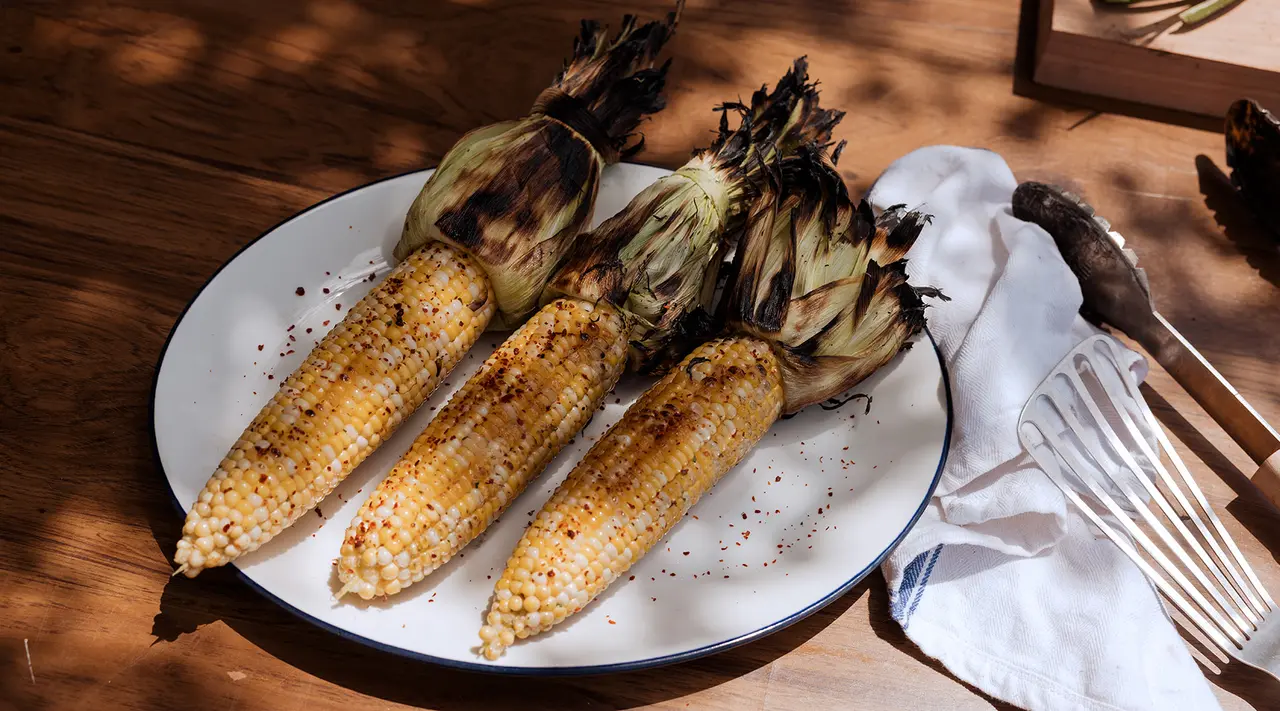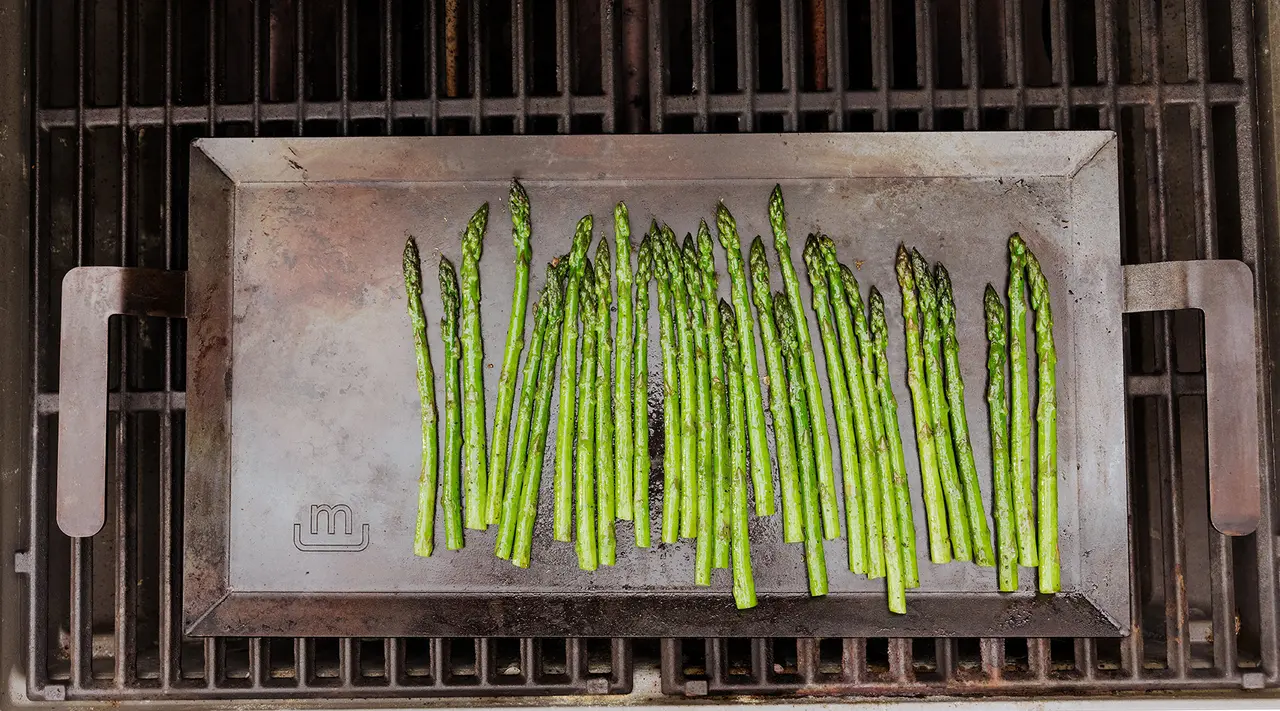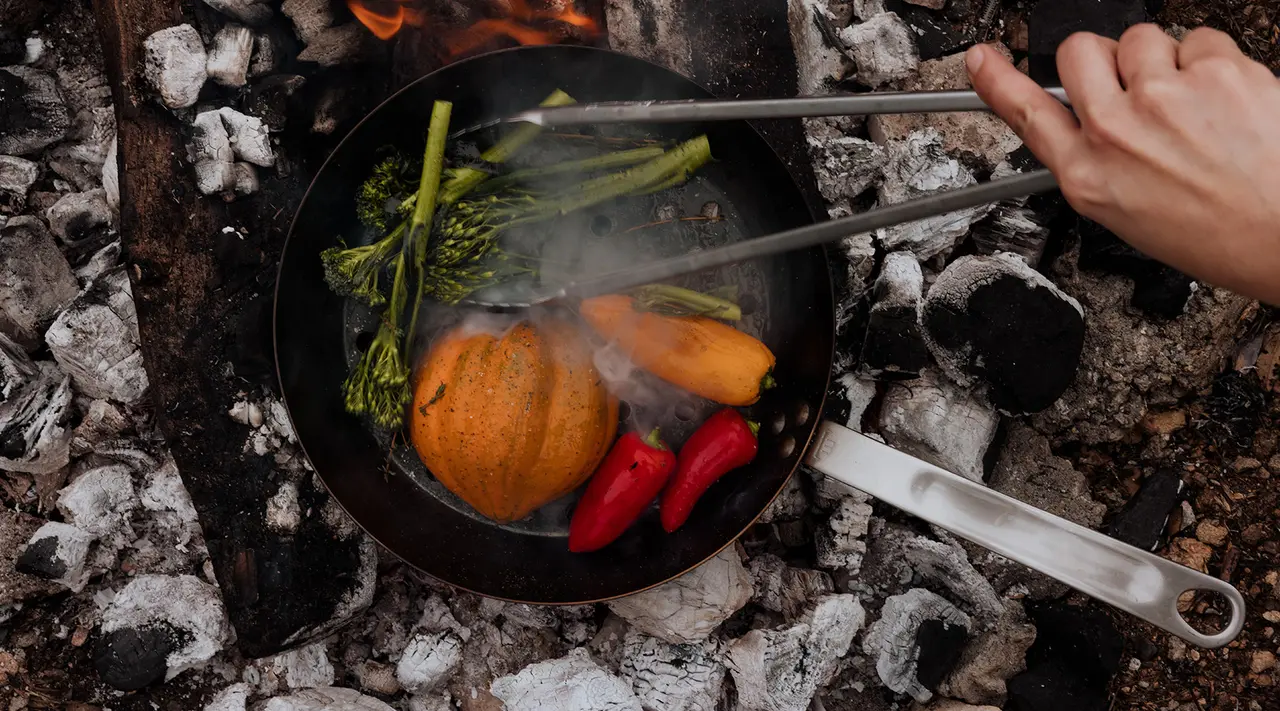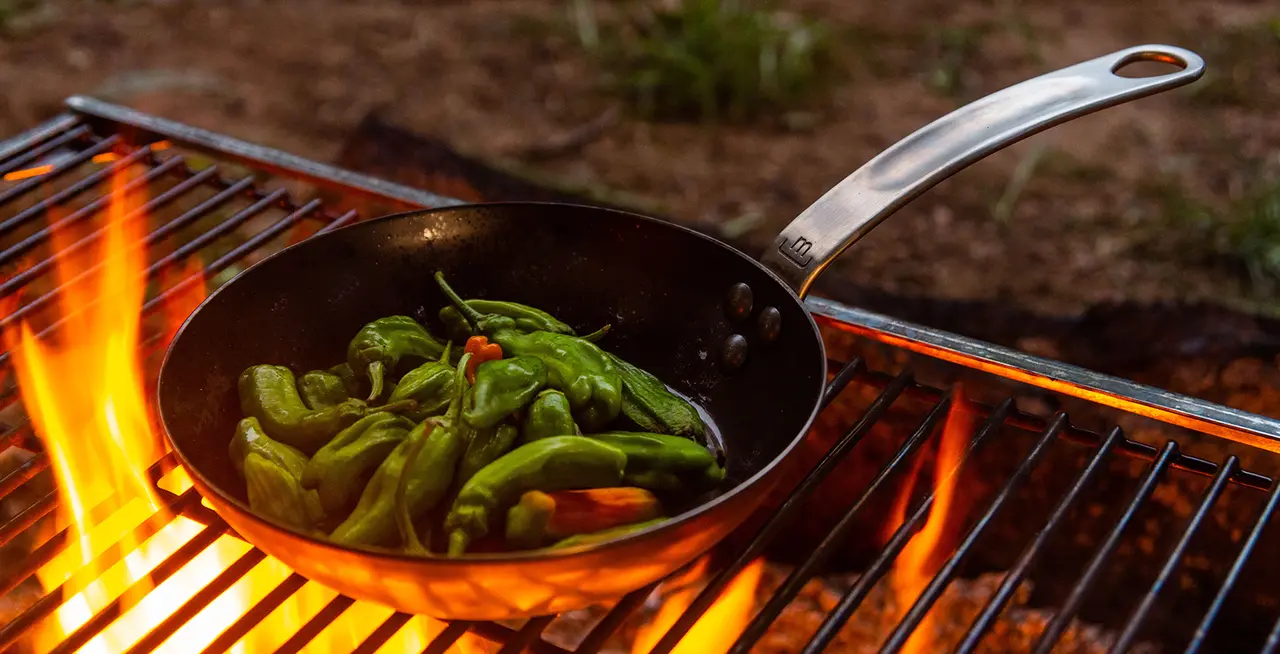We’re not here to convince you to eat more vegetables. We are here, however, to tell you that cooking your veg on the grill is one of the best ways to take advantage of the season. Not only will you get to spend more time outside, but the intense heat of the grill also brings out the sweetness of summer vegetables, while adding a touch of savory smoke. Since we’ve invested so much time in crafting the perfect grilling equipment, we want to help you maximize your ingredients.
Here, you’ll learn which grilling methods work best for different vegetables, how to get your veg ready for the grill, and how to implement cookware like griddles and grill frying pans to get the perfect result, every time.
Why Grill Vegetables?

Grilling brings intense, caramelized sweetness and smoky, savory complexity to your favorite vegetables, whether we’re talking about eggplant, corn, or even potatoes. Because vegetables typically cook quickly on the grill, you can preserve more of their nutrients, flavor, and texture than you would with slower methods like oven roasting.
Another thing we love about grilling is that it makes virtually any vegetable taste better. Got beets? Toss them on the grill for a deeply smoky, caramelized spin on the classic beet-and-blue-cheese salad. Love Mexican-style street corn? Sear whole, husked ears on a preheated griddle before drizzling with crema and lime.
Grilling Vegetables: A Step-by-Step Guide

Barring tender lettuces and leafy greens like spinach, which can wilt and burn quickly, most vegetables are suited to grilling. That being said, some vegetables require a little extra prep first—for dense vegetables like beets or potatoes, for example, you’ll want to make sure they’re fully cooked through before adding them to the grill. Otherwise, they’ll likely burn before you can get them tender.
For less dense vegetables like zucchini and eggplant, a good rule of thumb is to cut them into thick slices or wedges. This helps them cook through evenly without burning, and keeps them from slipping through the grates if you’re not using a pan or griddle.
Here’s a good basic formula for cooking vegetables on the grill.
- Have your prepared, thoroughly dry veg ready on a sheet tray or plate next to the grill, along with spatula, tongs, or any other tools you plan on using.
- If using, place your griddle, grill frying pan or other grill-safe cookware on the grates.
- If grilling directly on the grates, rub them down with a wadded up dish or paper towel dipped in oil (use tongs to make this less messy).
- Preheat grill, allowing your griddle or grill pan to preheat as well. If you’re setting up dual heat zones, set one side of your grill to high or medium-high, and the other to medium or lower.
- Add vegetables to the preheated grill and cook, turning or tossing occasionally, until cooked through and charred to your liking.
Best Cookware for Grilling Vegetables

You can definitely grill vegetables right on the grates of your gas or charcoal grill. For us, however, a Grill Frying Pan, Griddle, or regular Carbon Steel Frying Pan helps us to more easily flip and rotate our ingredients, reduces sticking and flare-ups, and means we aren’t losing slender veg like asparagus between the grates.
Grill Frying Pan
The first option, our Grill Frying Pan, is probably the best compromise between stovetop cooking and grilling. With its perforated bottom, your food still gets plenty of that coveted smoky kiss from the grill, but the naturally non stick carbon steel base allows you to toss your ingredients easily and move them around to different spots on the grill (or even campfire).
Griddle
For large vegetables or multiple veg at once, our Carbon Steel Griddle is likely your best bet. With ample cooking surface area plus three different surface types—solid, perforated, and a mix of the two—you can harness the power carbon steel offers for perfectly crispy, grill-kissed vegetables.
Carbon Steel Frying Pan
For slightly less smoky flavor but a deeper, more even char, there’s nothing better than our Carbon Steel Frying Pan used on the grill—perfect for sides of smoky, charred vegetables like carrots, beets, or onions.
Essential Grilling Techniques

There are a few ways to harness the dry, smoky heat of your grill when cooking vegetables.
For deep grill marks and robust char, try placing thick slices of eggplant or zucchini directly on the grates. If you’re looking for a deep sear and golden-brown crust— like in this crispy whole oyster mushroom recipe—a grill frying pan or griddle is your friend.
Another major boon when it comes to grilling vegetables is heat control: If you’re cooking larger items like cabbage wedges, for example, or you’ve got two different types of vegetable cooking at the same time, setting up dual heat zones helps avoid overcooking. Just like with a steak or fish filet, you can always transfer your veg over to the cooler zone if it’s browning too quickly or finishes cooking before the rest of the meal.
No matter what—or how—you’re grilling, however, always make sure to start by preheating your grill and rubbing the grates down with a thin layer of oil. This can help keep your food from sticking, as well as allowing you more control over how quickly your food cooks.
Ready to Cook?
Grilling your vegetables is the best way to double down on summer eating: Not only are you cooking—and dining—outdoors, but you’ve also got a cornucopia of seasonal produce to work with. And while you need little more than a hot grill and a pair of tongs to achieve deliciously smoky veg perfection, you can also amp things up with any piece of our Carbon Steel Grillware.
































